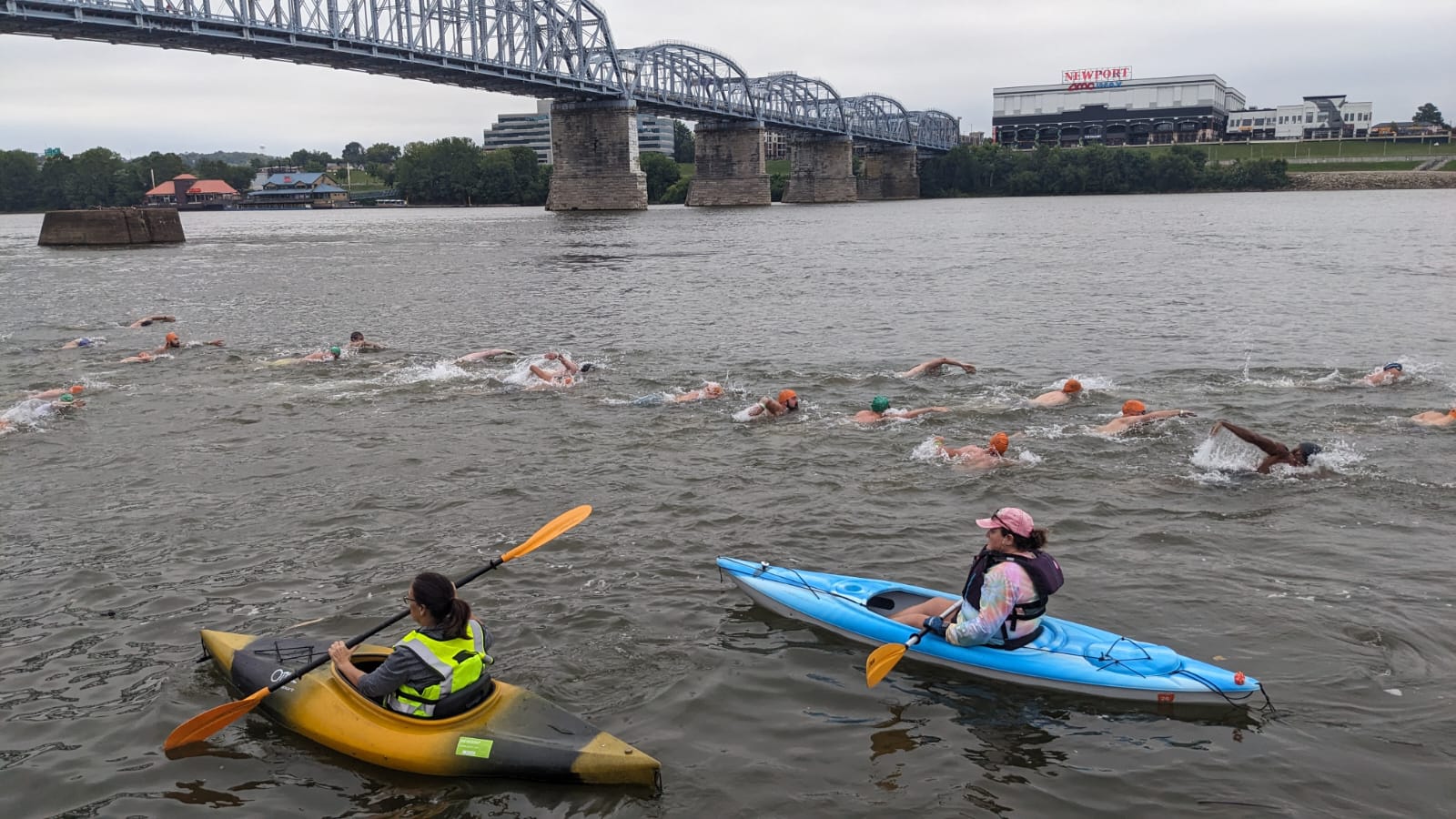Ohio Water Quality Standards
Water quality is impacted by many different sources and types of pollution. Under the Clean Water Act, each state must adopt water quality standards to protect their rivers, lakes, and other surface waters. Water quality standards help determine the health of a body of water and are used to help regulate the discharge of pollutants into those waters.

BACKGROUND
In Ohio, the health of a stream can be determined by collecting biological, chemical, and physical data and comparing it to water quality goals outlined in the Ohio Water Quality Standards and to previous water quality studies.
Biological data includes sampling for fish, macroinvertebrates (e.g., crayfish, worms) and amphibians (i.e., salamanders), as well as evaluating habitat (where the organisms live). Chemical and physical data includes testing water samples for bacteria (E. coli), dissolved oxygen, biochemical oxygen demand (BOD), metals, organics, flow and temperature, among others.
Aquatic Life Use and Recreational Use standards are most commonly used to help determine the health of a stream.
AQUATIC LIFE USE
In the 1970s and 1980s, Ohio streams or segments of streams were evaluated and many were assigned an Aquatic Life Use classification. This Ohio Water Quality Standards classification system includes the following general categories:
- Exceptional Warmwater Habitat (EWH): Designation applied to water bodies capable of supporting an exceptional or unusual community of warmwater fish and other aquatic organisms (e.g., significant populations of endangered species, unusually good chemical quality, above-average abundance of sensitive species and above-average populations of top carnivores).
- Warmwater Habitat (WWH): Designation applied to waters that are capable of supporting a balanced community of warmwater aquatic organisms. This is the most commonly applied use designation assigned to warmwater rivers and streams in Ohio.
- Modified Warmwater Habitat (MWH): Designation applied to waters that are incapable of supporting a balanced community of warmwater aquatic organisms due to extensively modified habitats
- Limited Resource Waters (LRW): Designation applied to waters that lack the potential for any resemblance of any other aquatic life habitat; the lowest degree of biological integrity, reflecting poor and very poor aquatic communities.
- Primary Headwater Habitat (PHWH): Designation applied to small swales, creeks and streams (usually with a drainage area of less than 1 square mile) that are the origin or source of most rivers. They can be home to small fish, amphibians and macroinvertebrates. Includes:
- Class I: Ephemeral streams (streams that typically only flow after rains or snow melts) and are often dry for long periods of time. They exhibit little or no aquatic life.
- Class II: Streams that normally flow intermittently (not continuously) but may flow year-round. They exhibit moderately diverse community of warm-water adapted aquatic organisms either seasonally or year-round.
- Class III: Streams that flow year-round and are influenced by groundwater. They exhibit moderately to highly diverse communities of cold-water adapted aquatic organisms. Class is further divided into two sub-categories: Class IIIA (Diverse Aquatic Life) and Class IIIB (Superior Aquatic Life)
Each water body is assigned a classification based on its potential for meeting the criteria for that classification (e.g., supporting a particular biological community).
Biological, chemical and physical data is then collected to determine whether the water body actually met the criteria (was in "attainment," "partial attainment" or "non-attainment" of the Aquatic Life Use classification). Attainment status does not apply to PHWH waters.
- Attainment: A body of water is in "attainment" if its chemical, biological and physical (habitat) integrity is maintained (as evaluated against water quality standards). Attainment means that a body of water capable of supporting a particular biological community is in fact supporting that biological community (e.g., trout in a cold water stream).
- Partial and Non-Attainment:A body of water is in "partial attainment" or "non-attainment" when chemical, biological or physical indicators only partial attain the required condition for that parameter or are below the required condition. A body of water is considered impaired if it is in partial or non-attainment.
- Reclassification of Aquatic Life Uses: If the biological health of the water is continually better or worse than in previous studies, the Aquatic Life Use classification may be recommended to be changed to another category which is more appropriate and attainable.
RECREATIONAL USE
During the recreation season (May 1 to October 31), Ohio streams or segments of streams are assigned a Recreational Use designation that can help determine whether the water is safe for recreation based on a count of microbial pathogens (e.g., bacteria).
This designation is determined by the amount of physical contact a person might have with the body of water. In general, the water is assigned either:
- Primary Contact: Designation applied to waters that are suitable for full-body contact recreational activities such as wading, swimming, boating, water skiing, canoeing, kayaking and scuba diving. The designations under Primary Contact include:
- Primary Contact Class A (PCA): Water bodies that support frequent primary contact recreational activities
- Primary Contact Class B (PCB): Water bodies that support occasional primary contact recreational activities
- Primary Contact Class C (PCC): Water bodies that support infrequent primary contact recreational activities
- Secondary Contact Designation applied to waters that result in minimal exposure potential to water borne pathogens because the water is located in a remote, hard-to-access area.
Fecal bacteria (e.g., E. coli) are used as an indicator for the possible presence of pathogens in surface water. Pathogens can cause gastrointestinal disorders, ear and skin infections and respiratory issues.
Bacterial water quality standards have been established to determine when the concentration of fecal bacteria in water is too high and causes an unacceptably high health risk to humans who recreate in the waters.
Based on E. coli counts, a specific 30-day geometric mean has been established for the four Recreational Use classifications: PCA, PCB, PCC and SC. Chemical data is then collected to determine whether the 30-day geometric mean for E. coli has been exceeded at a sampling location and therefore did not attain its Recreational Use status.
